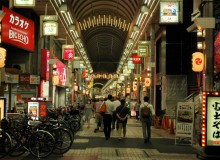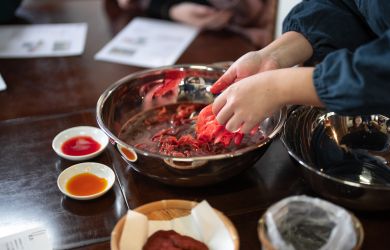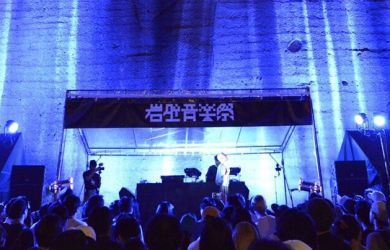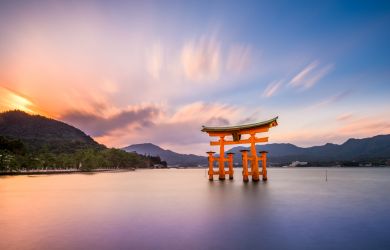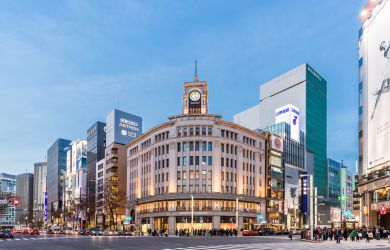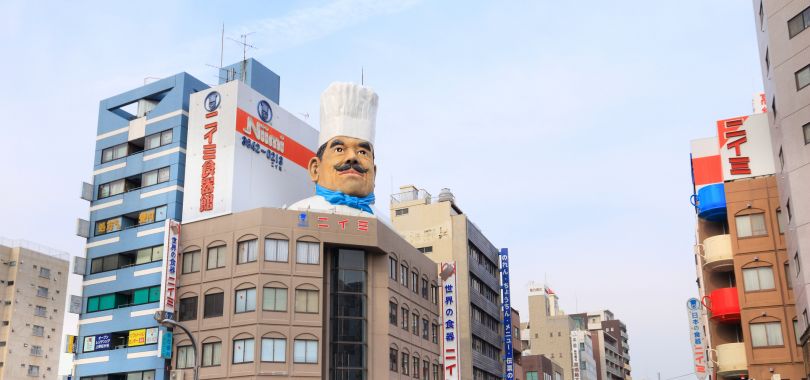
August 22, 2023
Tokyo Neighborhood Guide: Kappabashi
Heartlands: Kitchenware, coffee and curious cucumbers
Sitting in the shadow of one of Tokyo’s most popular tourist attractions is Kappabashi. Unglamorous and decidedly downtown, Kappabashi quirkily contrasts the bright lights and colorful shop fronts of the large temple and the entertainment district Asakusa. Take time to explore this compact corner of the capital, famous for its connection with kitchenware, and you’ll unearth intriguing history and unique culinary finds.
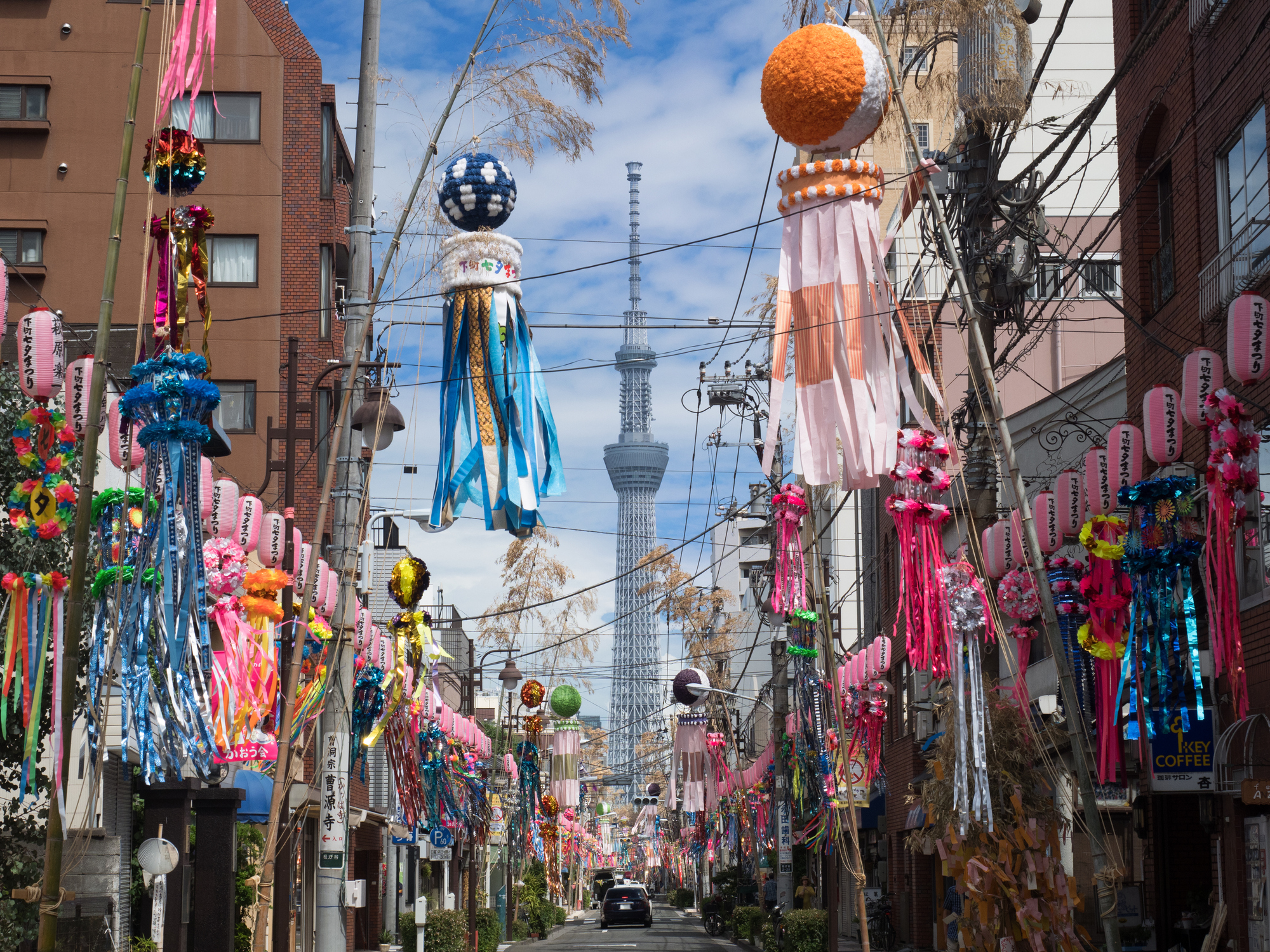
Everything and anything related to cooking utensils can be found on sale in the 170-plus stores that line the area’s streets. You name it, Kappabashi has it: the best knives, coffee grinders, stacks of low-priced plates. Most of the goods are geared up to the city’s multitude of restaurant owners and staff who come here to keep their eateries stocked up with utensils. But – even though Kappabashi is a hub for wholesale kitchenware – the very name of the area is unusual in itself.
The kappa in Kappabashi refers to a kind of yōkai. In Japanese folklore a yōkai is a sort of imp that comes in a variety of weird and wonderful forms, mostly related to old folktales. Others include the pandemic-stopping mermaid called Amabie, which saw a resurgence of popularity during the Covid-19 pandemic, and the surreptitious hair-cutting kamikiri yōkai – a few among an ensemble cast of other weird and wonderful rouges.
Kappa (which roughly translates to “river-child” in English) are curious creatures. Usually associated with water and their love of cucumbers, they appear similar to a turtle but stand on two legs, have a duckish beak, webbed hands and carry a dish on their head. These strange beings, which sometimes get up to malevolent (but more often tricksy) acts, have become ubiquitous with the area. Within moments of entering the shopping street visitors are confronted by humanoid kappa statues standing squat on the pavement, welcoming them into shops decorated with cartoonish kappa decorations. The kappa theme continues down the various side streets which shoot off from the main thoroughfare.
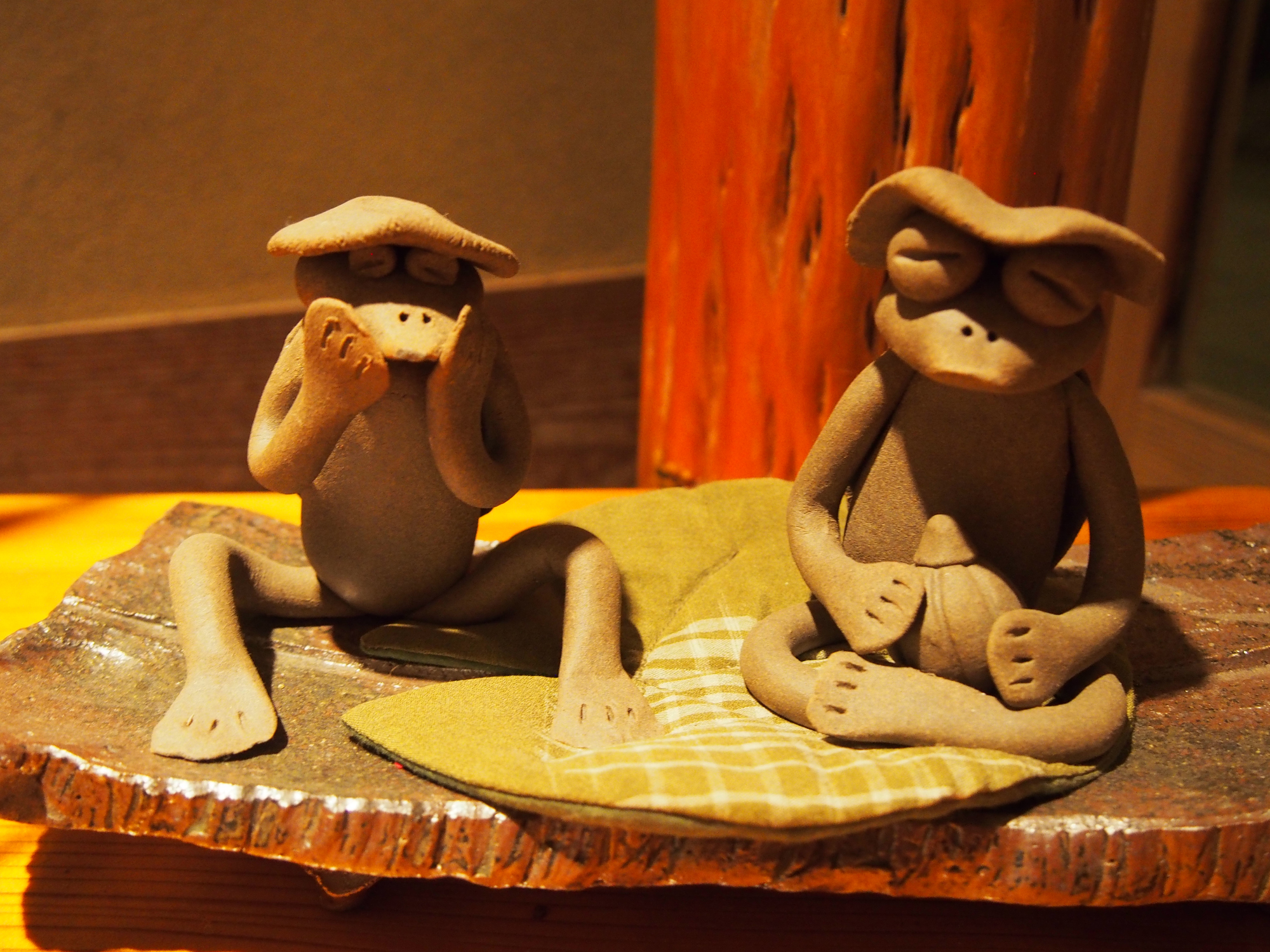
The most famous origin theory is based around a local merchant called Kappa Kawataro who sold raincoats. During the Bunkyo era (1804–1818) the area was prone to flooding; even the smallest amount of rain would cause the rice fields to flood. So, in order to solve the problem, Kawataro decided to fund the construction of a new waterway himself. The kappa that lived nearby in the rivers saw Kawataro’s generous act and, under the cover of darkness, helped to build the new river. It’s said that local people who saw the kappa received prosperity in their businesses.
Following his death in 1818, Kawataro was buried within the grounds of the nearby Kappa-dera temple. First built in the Marunouchi area in 1588 as a Soto Zen temple, a string of disasters saw the temple relocate several times. It was finally rebuilt in its current location following the widespread destruction of the Great Fire of Meireki (1657). Today the temple, which is also known as Sōgen Temple, has become something of a pilgrimage spot for all things kappa related. According to legend, located in the temple’s treasure hall is the mummified hand of a kappa. Walk among the grounds of this sacred site and take time to spot the collections of cucumbers carefully piled on altars. The cucumbers are left as offerings to the kappa, appeasing them with their favourite snacks. Strange statues of kappa are clustered around the paths with cucumbers tucked under their arms and on Kawataro’s grave.
Aside from kappa, most people are brought to the Kappabashi area for its culinary connection. The history of Kappabashi and its kitchenware goes back over a century. Around 1912 a collection of second-hand goods sellers opened up shops in the area, then in the years following the Second World War, the main street developed into a shōtengai (shopping street) with a large selection of retailers settling kitchenware. Now almost every store sells something cookery related.
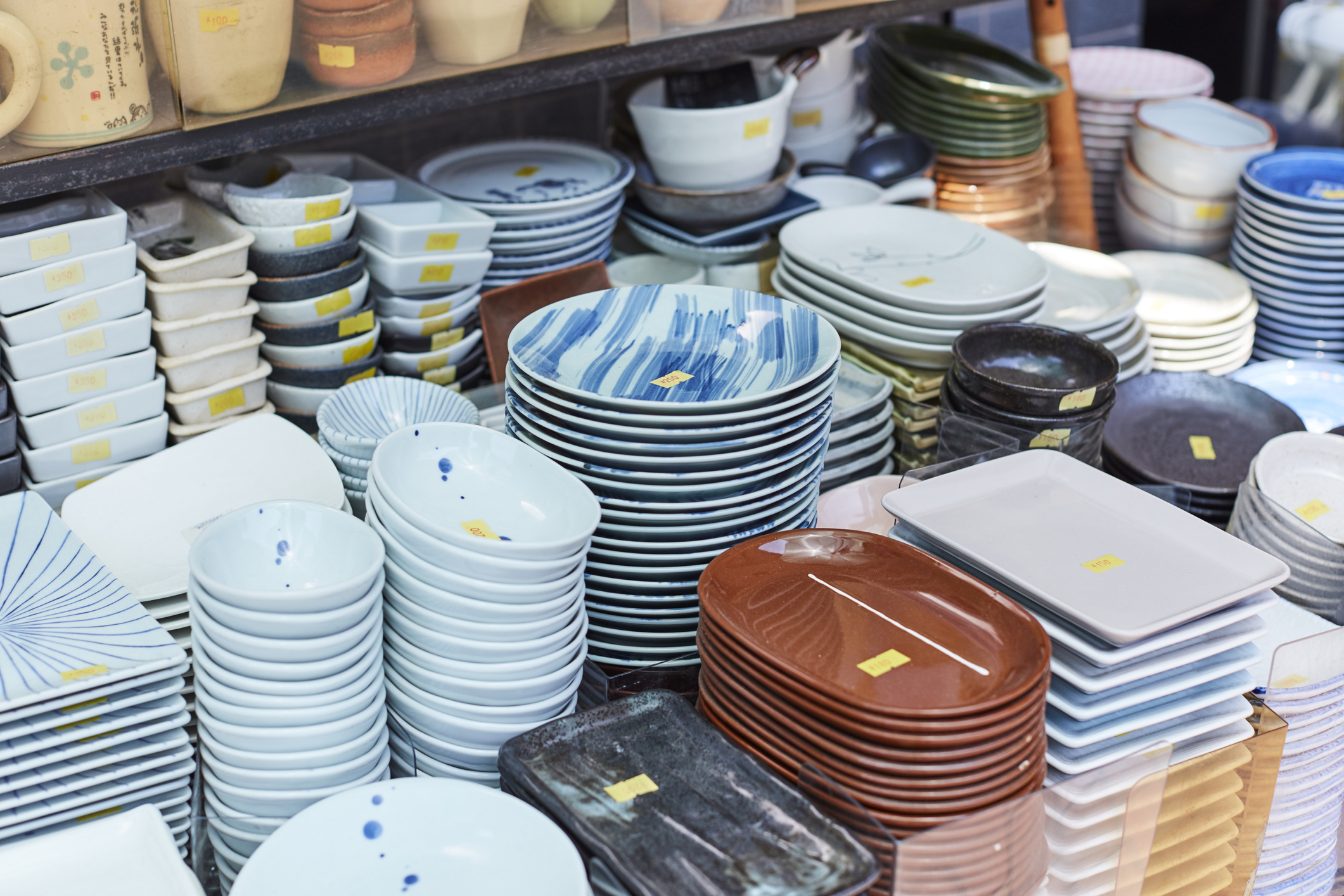
Start your search for kitchen curios at Nimi Tableware. It’s hard to miss this mainstay of the shopping street: The multi-story building is topped by the oversized head of a chef who looks out, god-like, over Kitchen Town (a nickname for the area). Opening its doors in 1907, inside you’ll find an array of food-adjacent items from Japan and further afield.
Specialty is the name of the game in Kappabashi’s stores. Many of the shops in the district have been diligently selling their own specialized products for decades. Dengama sells a tantalising selection of ceramic ware and Japanese pottery at affordable prices, while Fujita Sales’s towering shelves are piled with stacks of low-cost Japanese crockery. Utsuwazoshi is the place to go to pick up carefully crafted bento boxes and wooden utensils. And then there’s Kama-Asa, which was founded in 1908 and sells an array of Japanese knives.
For caffeine fiends, stopping off at Union Coffee is a must. Dating back to 1962, the store has a feeling of an old-fashioned coffee shop and sells anything and everything you need to make the best cup of joe possible – including the beans.
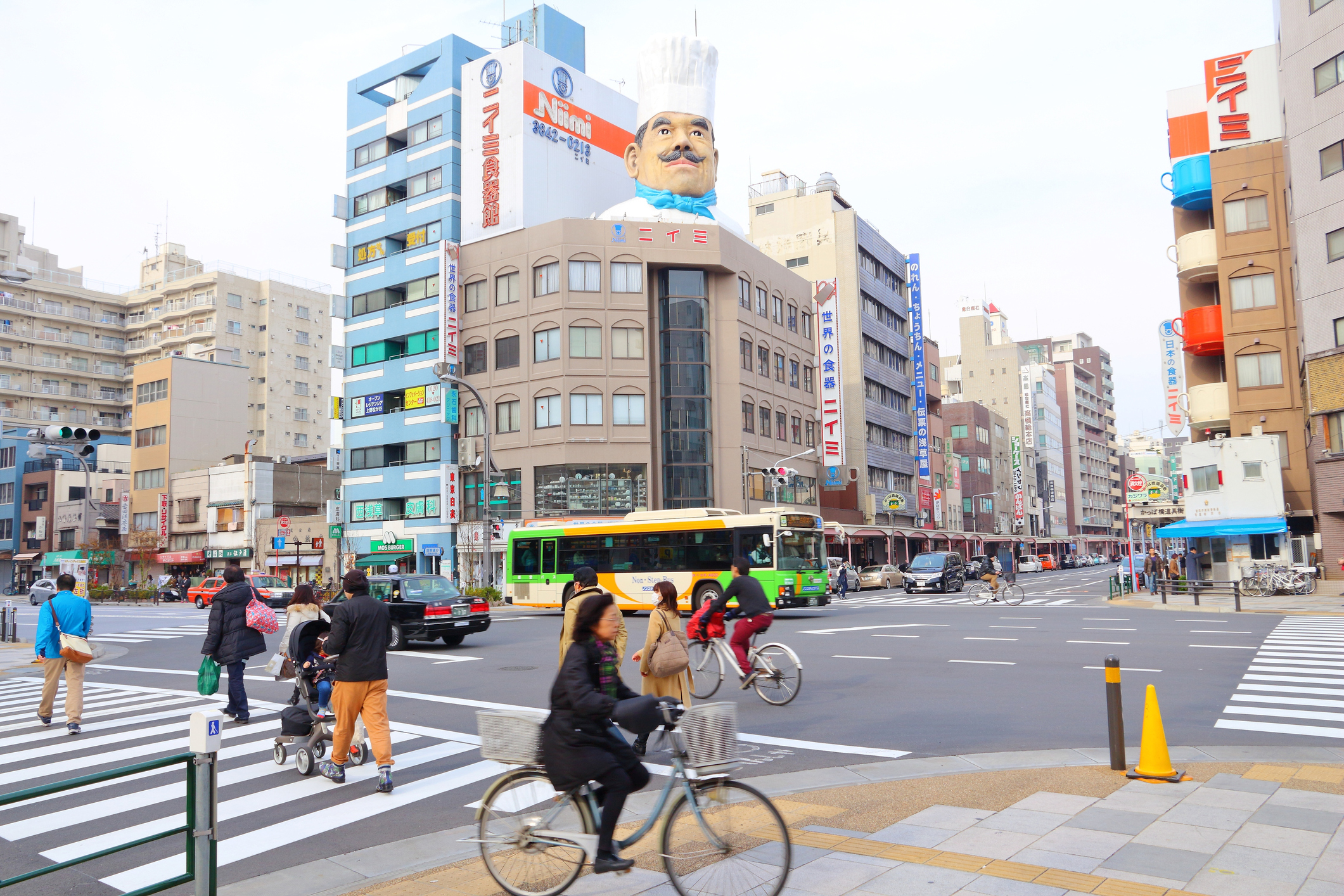
Shopping for food replicas has become a popular activity on Tokyo’s tourist trail. A plethora of plastic food model sellers are dotted around the district, originally providing the city’s eateries with models of menu items to place in window displays to lure in hungry customers. And now you can find your favorites to take home. With over 100 years in business, Sato Sample is a colourful warren of plastic replicas, where you can buy everything from sushi keyrings to bowls of fake ramen. Another favourite for faux food is Ganso Shokuhin Sample-ya which has been selling food replicas since 1932.
When it’s time to take a break from browsing the variety of stores and discovering the hidden gems, there’s some tempting local eateries to try out. Those looking for a cheap bite to eat on the go should look no further than Takematsu Tori-niku-ten. Founded in 1880, the venerable chicken shop has spectrum of specialties to try, from nakayaki (marinated chicken wings) and tsukune (chicken meatballs) to freshly cooked karaage. Sold by the gram and eaten street-side, it’s an inexpensive way to savour the down-to-earth heritage of the town.
Fans of kissaten should spend time exploring the side streets such as Kappabashi Hondori, which intersects the main shopping street and is overlooked by a view of the Tokyo Skytree. A collection of traditional coffee shops are slotted among the kitchen utensil stores of the area, each with their own history and aesthetics. One local favourite is Kissaten Cisz, a nostalgia-inducing world of naporitan, coffee and cakes. Elsewhere, Cafe Otonova takes a twist on the classic coffee shop with shabby-chic interiors and an affordable lunch set menu. Kimama na Kitchen is also a top place for a bite to eat; its hearty menu includes pasta and Japanese curry.
For something a little more suited to an evening meal, there’s a host of okonomiyaki restaurants around the town. Sometarō serves up a traditional experience with tatami seating and cook-your-own meals service but has English menus available or there’s Hinatoya, with a homely atmosphere and a friendly female owner who cooks up a storm on teppan.
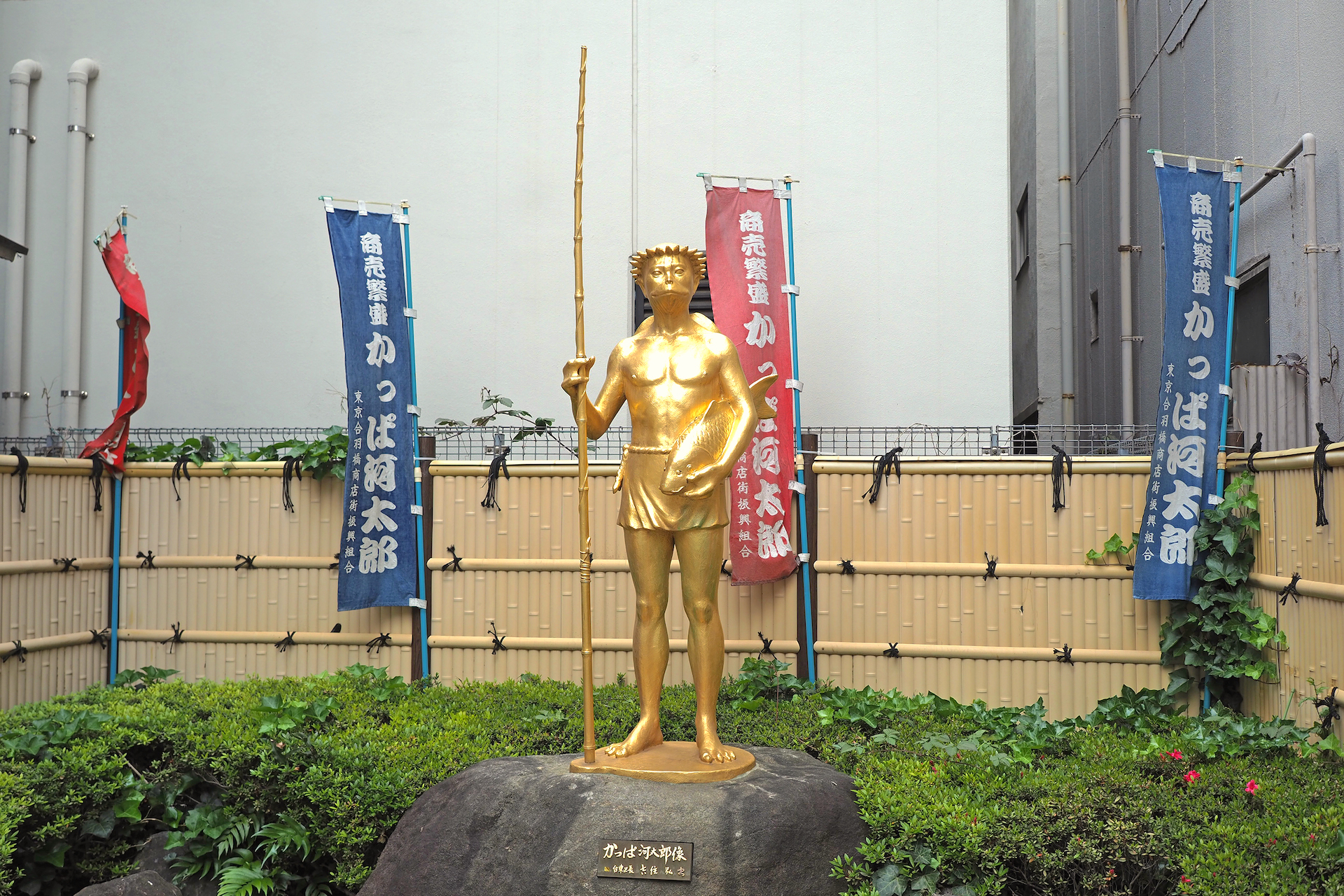
Image: courtesy of tokyo-trip.org
Before you leave this corner of the city, with plastic food replicas, shiny new Japanese plates and stomachs full of good food, save time for one last stop off.
Halfway along the shōtengai is a tiny “pocket park” which plays host to a golden statue of Kappa Kawataro himself. Erected in 2003 to commemorate the 90th anniversary of the official founding of the Kappabashi shopping street, snapping a picture with the legendary founder is the ideal way to round up your day in the district. You never know: it might just bring you good luck in business too.
